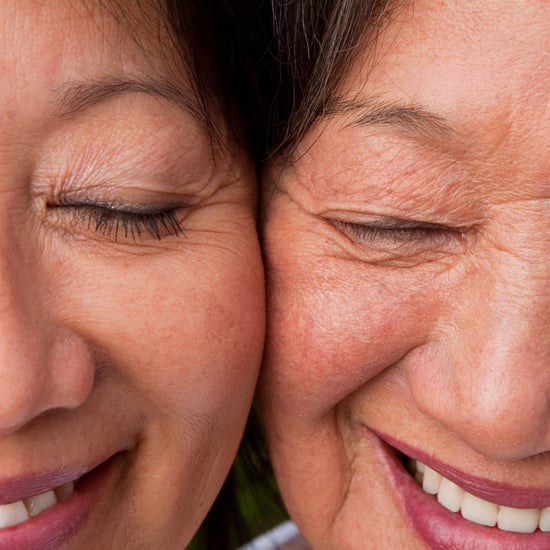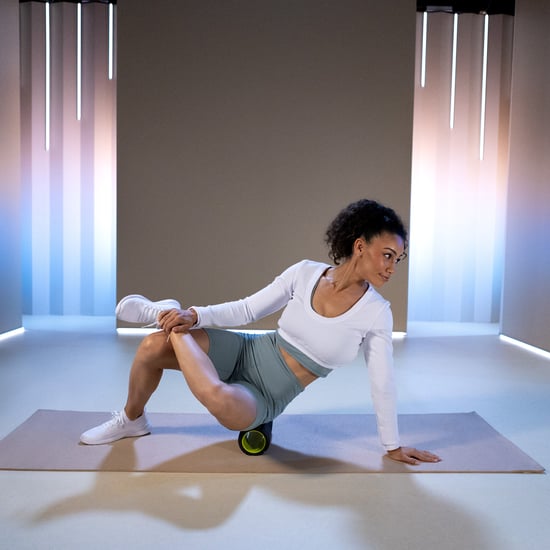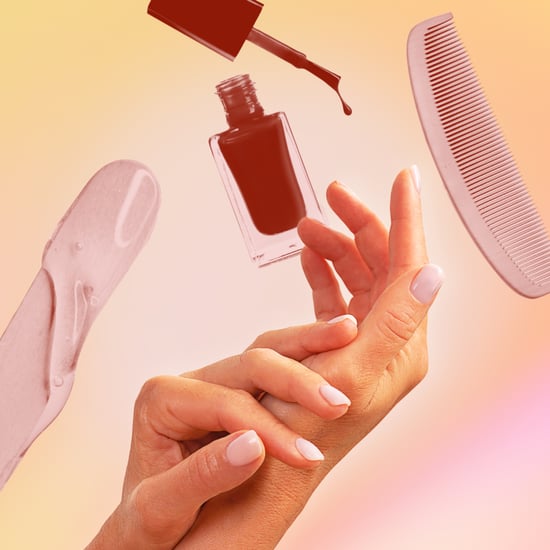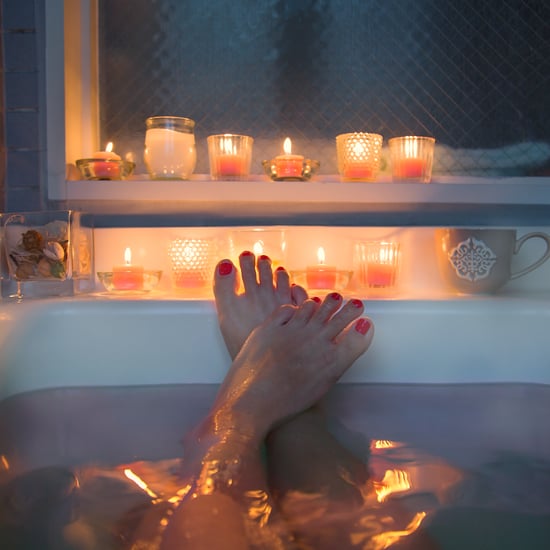Benefits of Cold Plunges, According to Experts
The Benefits of Cold Plunging Are Legit — Here's Why It's Worth the Freeze
 These days, it seems like everyone is throwing themselves into icy water. Celebs like Kate Hudson, Hailey Bieber, Lizzo, and Lady Gaga have all touted the benefits of a friendly cold plunge. But with all the hype and alleged health advantages, are the benefits of cold plunges actually worth the freezing temperatures?
These days, it seems like everyone is throwing themselves into icy water. Celebs like Kate Hudson, Hailey Bieber, Lizzo, and Lady Gaga have all touted the benefits of a friendly cold plunge. But with all the hype and alleged health advantages, are the benefits of cold plunges actually worth the freezing temperatures?
Whether you call it a cold plunge, an ice bath, cold-water therapy, or cold-water immersion, the basic concept is all the same. The idea is to completely submerge yourself in cold water (usually below 15 degrees Celsius), for anywhere from 30 seconds to a full 15 minutes. Interestingly enough, regardless of celebrity status, most people seem to enjoy cold plunging enough to do it again, and it's probably due to the many reported benefits of cold plunging. Think reduced inflammation, less muscle soreness, better sleep, and potentially sharper focus, per the Cleveland Clinic.
"Although some may dismiss cold-water treatment as a passing fad, it has been used for years for its health benefits," says Carmen Van Rensburg, an accredited exercise physiologist and consultant to Facialteam. Nordic countries notably cold plunge in combination with time in a sauna, and the practice may date back to the Finnish stone age.
Now that cold plunging is trending again, it's not just elite athletes and actors getting in on the ice. If your shower temperatures usually reach the depths-of-Hades (hi, it's me), the idea of a lukewarm rinse — let alone a tub of ice — might sound like pure torture. But if so many people are cold plunging and swearing by it, there's got to be something great about it . . . right? To fully unpack the hype, we asked experts to help unpack the actual health benefits of cold plunges.
What Are the Benefits of Cold Plunges?
Soaking in ice-cold water isn't the most appealing pitch, but the science confirms there are real benefits to cold plunging. For starters, research shows that cold-water therapy can help reduce inflammation. Michael Hamlin, CSCS, strength and conditioning coach and founder of Everflex Fitness, says that it can also help with perceived soreness after a tough workout, which is why it's often used by athletes for recovery purposes. He says cold plunges can also boost immune function, decrease levels of pain, stress, anxiety, and depression, and increase alertness and energy thanks to spikes in the "fight-or-flight" hormone and neurotransmitter norepinephrine.
Part of the magic of cold plunging is the way it changes your body's blood flow. "The cold water causes blood vessels to constrict, which increases blood flow to the organs and tissues when the body is warmed up again," explains Lalitha McSorley, PT, owner and lead physical therapist at Brentwood Physiotherapy in Calgary, Canada. "This can help improve overall circulation and oxygenation of the body." That blood flow has a cascading effect, imparting even more perks.
"Having proper circulation allows the heart and other organs to perform normally, can help to boost your immune system, and will increase your energy," explains Matt Tanneberg, DC, chiropractor and certified strength and conditioning specialist in Scottsdale, AZ. It also plays a part in reducing inflammation. Inflammation isn't always bad — in fact, it's "vital in the recovery process," Tanneberg says — but when there's excess inflammation, it can delay healing. "This blood flow, along with the anti-inflammatory benefits, will help speed up your recovery process post-workout or in returning from an injury, as well as decrease your overall muscle soreness," Tanneberg says.
Building off of these processes, cold plunging can also improve sleep quality, "which is important for optimal recovery," McSorely says. You may notice better sleep because cold plunging decreases stress in general. "Exposure to cold water has been shown to activate the parasympathetic nervous system, which helps to reduce stress and promote relaxation," McSorely explains.
Kelly Kessler, DPT, host of the "Rewiring Health" podcast and owner of Optimal You Health and Wellness adds that "stress and anxiety are a result of the brain's perception of a potential threat to the system." Cold exposure can help you train your brain not to respond as impulsively, thus increasing your overall resilience to stress, she explains.
Rachel Pohl, an adventure artist currently living in Norway, is one of the many converted by cold plunging. "If you told me a few years ago that immersing myself in ridiculously cold water would become one of my favorite activities, I would have laughed," she wrote on Instagram. "But a year and a half ago, I decided to face my discomfort. I read about both the physical and mental health benefits of ice baths, and I was tired of being anxious and constantly sick. So I committed to gradually spending longer and longer in cold water (often in the shower!). Now, I crave the rush of endorphins, and the more often I do this (most days), the less anxiety I experience, the better my immune system is, and I'm also better equipped at handling stressful situations (learning to tolerate discomfort means I can work through hard things)."
Dutch athlete and speaker Wim Hof, aka "The Iceman" and creator of the Wim Hof Method, is another creator who uses his platform to share some of the physical and mental health benefits to traditional ice baths. "I always say, a cold shower a day keeps the doctor away," he wrote on Instagram. "If you've ever taken one, then you know from experience that it shakes off the cobwebs and leaves you eager to attack the day."
How Long Should You Stay in a Cold Plunge?
Not long. "The typical duration in a cold plunge is around three minutes," Tanneberg says. Some studies show increased benefits in ice baths lasting 11 to 15 minutes, but all the experts here recommend starting slowly and staying in for just a few minutes unless you're being monitored by a health professional. In the beginning, they suggest working your way up a few seconds at a time. McSorely specifically recommends short durations of 10-30 seconds.
Are Cold Plunges Safe?
Extreme wellness practices may have extreme consequences, and cold plunging isn't without its risks. "Cold exposure intentionally activates the sympathetic (fight-flight-freeze) response of the autonomic nervous system, which can lead to hyperventilation and potentially fainting," Kessler says. If either of those things happens in open water, you risk drowning. Cold plunging may also cause a heart attack, especially for anyone with a heart condition, Kessler adds. Because cold plunging constricts your blood vessels, it can also cause drastic changes in blood pressure, which can be dangerous, especially if you're taking blood-pressure-reducing medication.
Submerging your body and face in cold water results in the "cold shock response," according to the American Heart Association (AHA); this is also a risk factor for drowning, as it causes a reflexive gasp, and if your head is below the surface, that could make you swallow water. Many people who take part in cold plunging do so by sitting in cold tubs without submerging their heads, but it's important to be aware of this response if you're jumping into cold water or diving under.
Cold exposure can cause hypothermia, and that risk is even more pronounced in water, because it takes heat away from the body 25 times faster than air, per the AHA. However, unless you're in the water for an extremely long period of time, that shouldn't be too much of a concern: it takes about 30 minutes for an adult of average size to develop hypothermia — even in near-freezing water, according to the National Center for Cold Water Safety.
In general, "long periods of cold exposure can be dangerous if done improperly, so it's recommended that anyone using ice baths for recovery should consult a doctor before beginning," says David Seitz, MD, medical director for Ascendant Detox. "Make sure to get their clear approval before attempting cold-water therapy. Additionally, any signs of discomfort or pain during the cold-water immersion should be taken seriously, and the person should discontinue using the therapy immediately."
How to Do a Cold Plunge Safely
Though it's not without risks, it is possible to do a cold plunge or ice bath safely. Just remember: "it's important to consult a healthcare professional before practicing cold plunging," Hamlin says.
Start Slowly
One of the easiest ways to dip your toe into the practice is through cold showers. Specifically, try contrast showering, where you switch the temperature of the water from hot to cold and then back to hot again. "This can begin to allow your body to 'feel' the benefits of a cold plunge before you even start," Tanneberg says. If you're using a tub or pool to DIY cold plunge, you'll still want to "start with short periods of immersion and gradually increase the time as your body adapts," Hamlin says. Before hopping in, it can also be a good idea to splash some cold water onto the back of your neck to prime your neurological system for the cold that's coming, the AHA says.
If you want the stress-relieving perks of cold-water immersion but don't care for the bodily recovery benefits (or just don't have a place to try it), you can try submerging just your face. Research shows that doing so offers the same relaxation-inducing activation of the parasympathetic nervous system that you get from dunking your body.
Choose a Safe Location and Temperature
If you're cold plunging in the wild, opt for designated cold-plunging areas, such as cold-water pools or natural bodies of water that are safe for swimming, Hamlin says. That way, you can be sure there are no strong currents, waves, or other factors that could make the environment difficult to swim in (or climb out of) when you're freezing cold. As far as temperature goes, it can be difficult to achieve a specific water temp; however, studies on cold-water therapy typically show benefits for participants in water between 10 to 15 degrees Celsius.
Monitor Your Body
"Pay attention to how your body responds to cold plunging, and stop if you experience any discomfort or adverse effects," Hamlin says, like feeling dizzy or faint or having trouble breathing. And if you experience any signs of hypothermia, such as shivering or numbness, exit the water immediately, McSorely adds.
Warm Up Afterward
After the plunge, change out of your cold, wet clothes or swimsuit and gradually warm up by wrapping yourself in a warm towel or blanket or taking a warm shower, McSorely says. Resist the urge to hop into a super-hot shower right away, as this will cause your blood vessels to dilate, and you could pass out, according to Cedars-Sinai.
— Additional reporting by Chandler Plante







